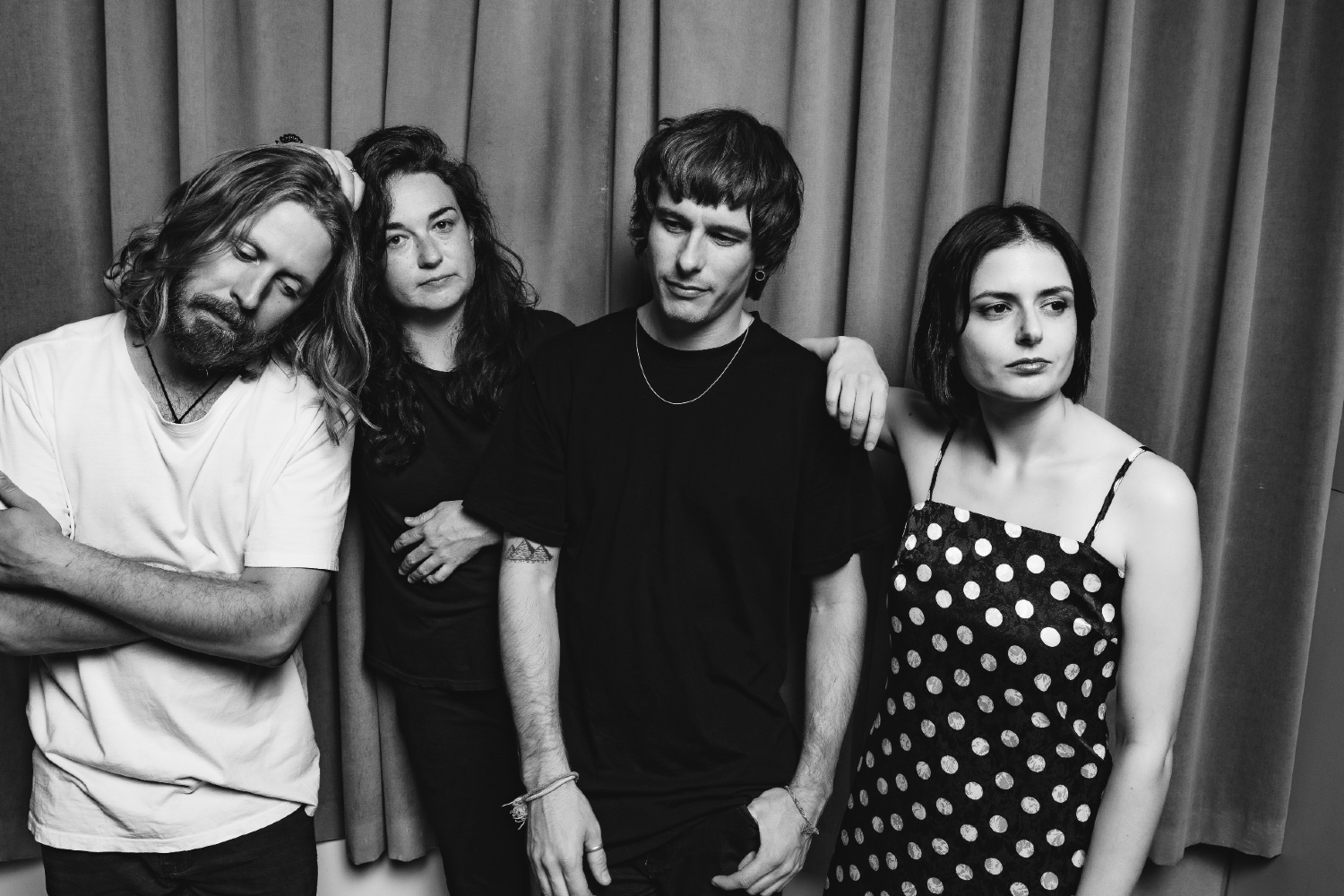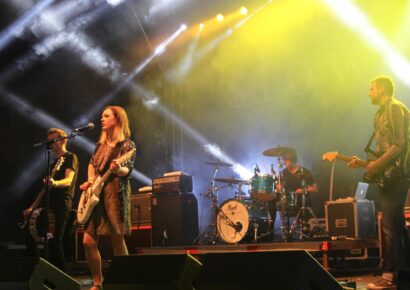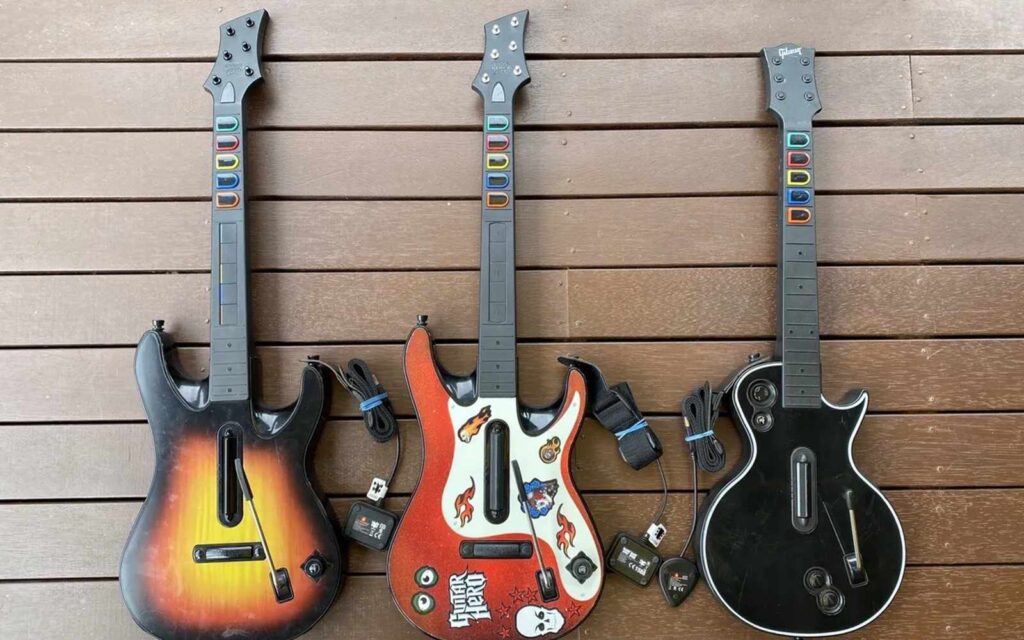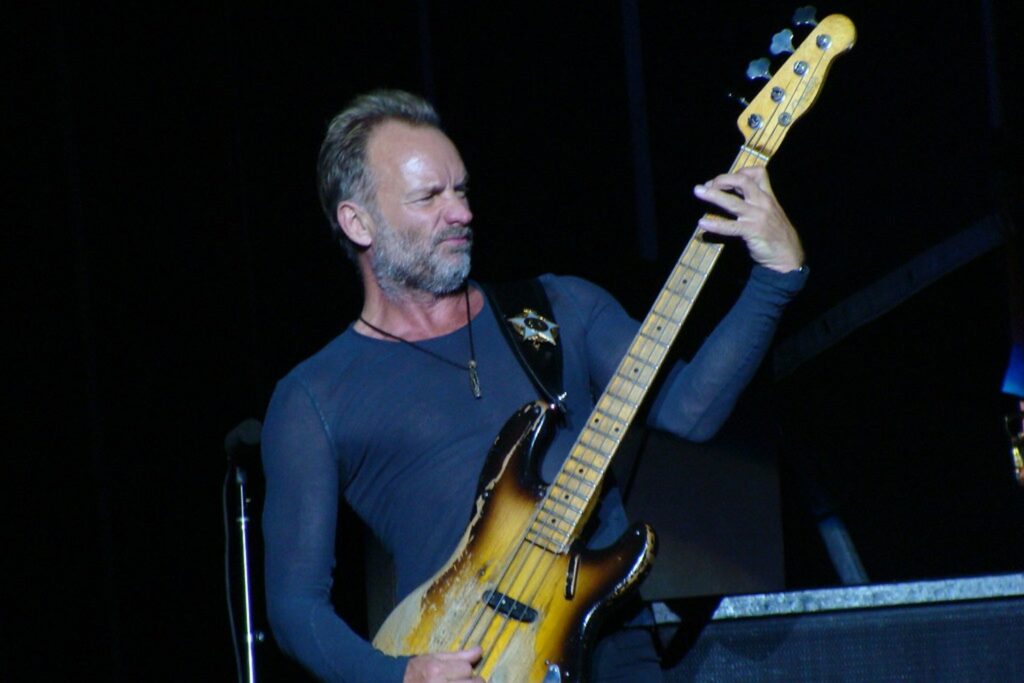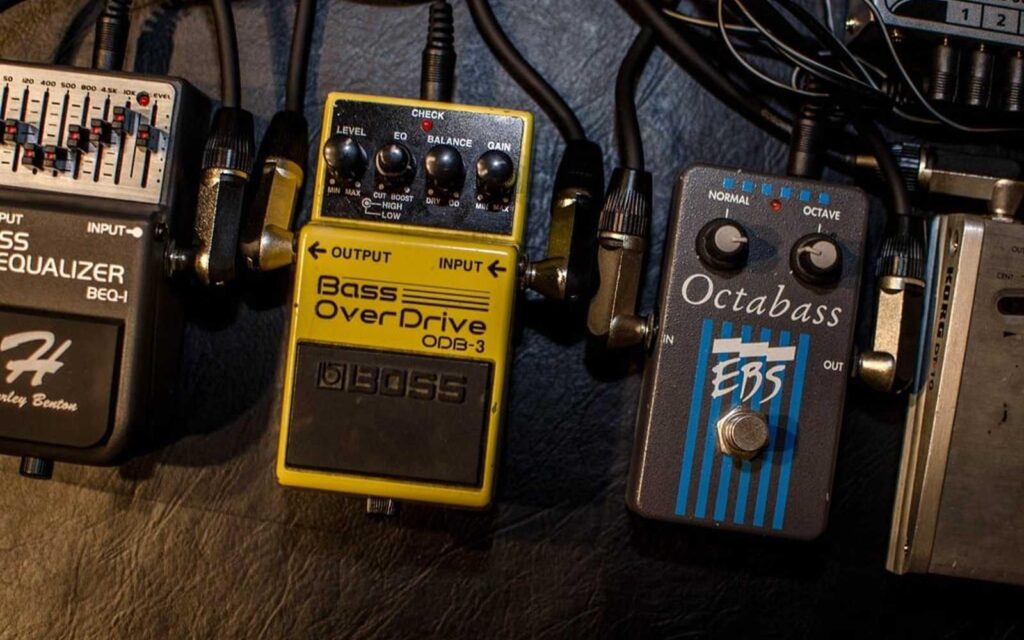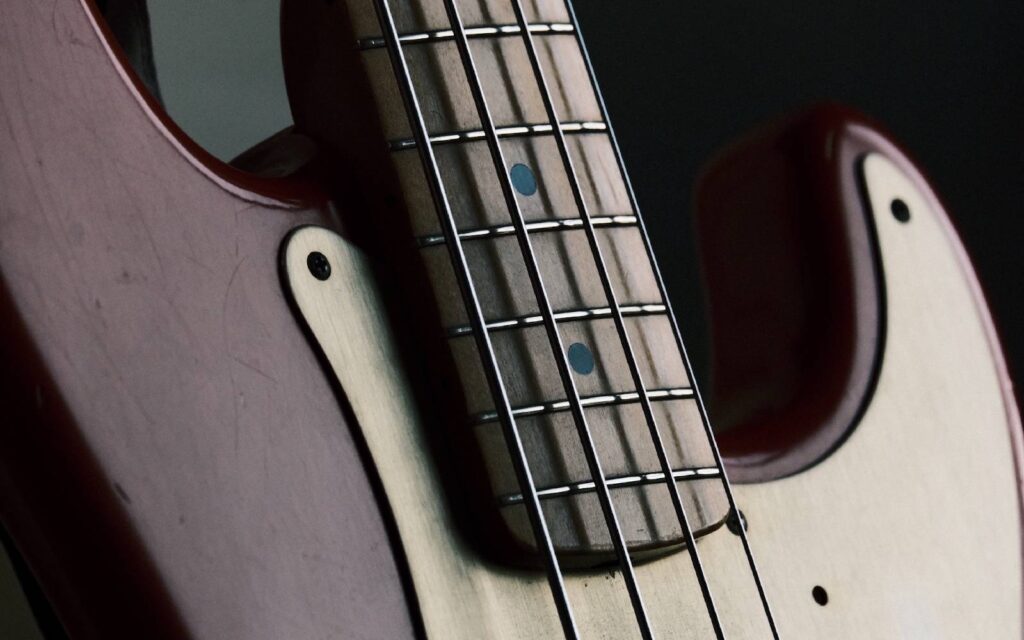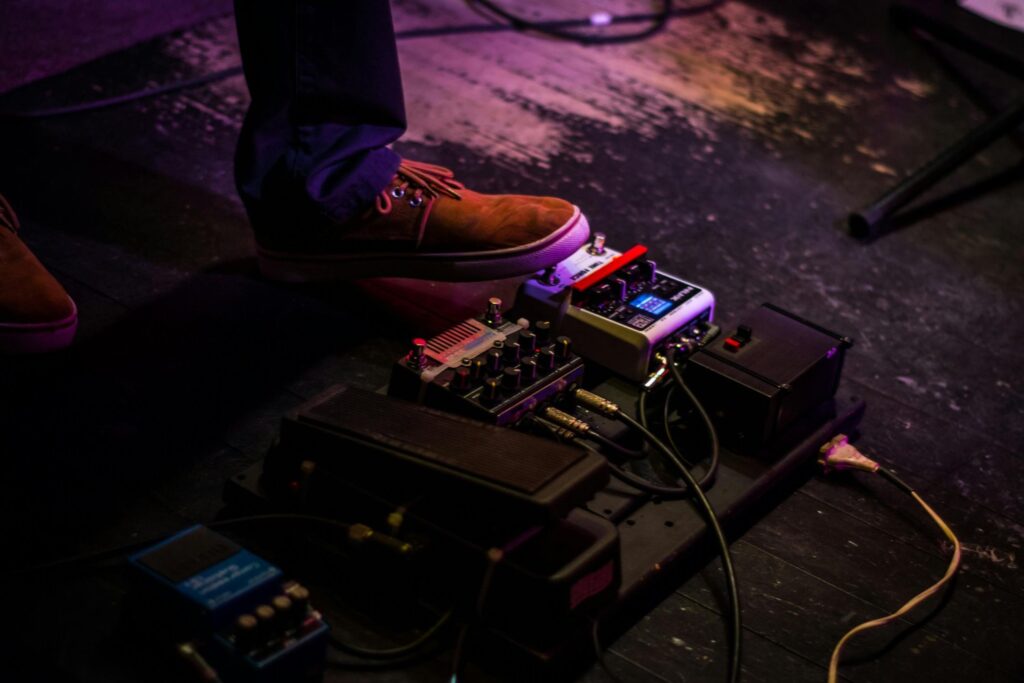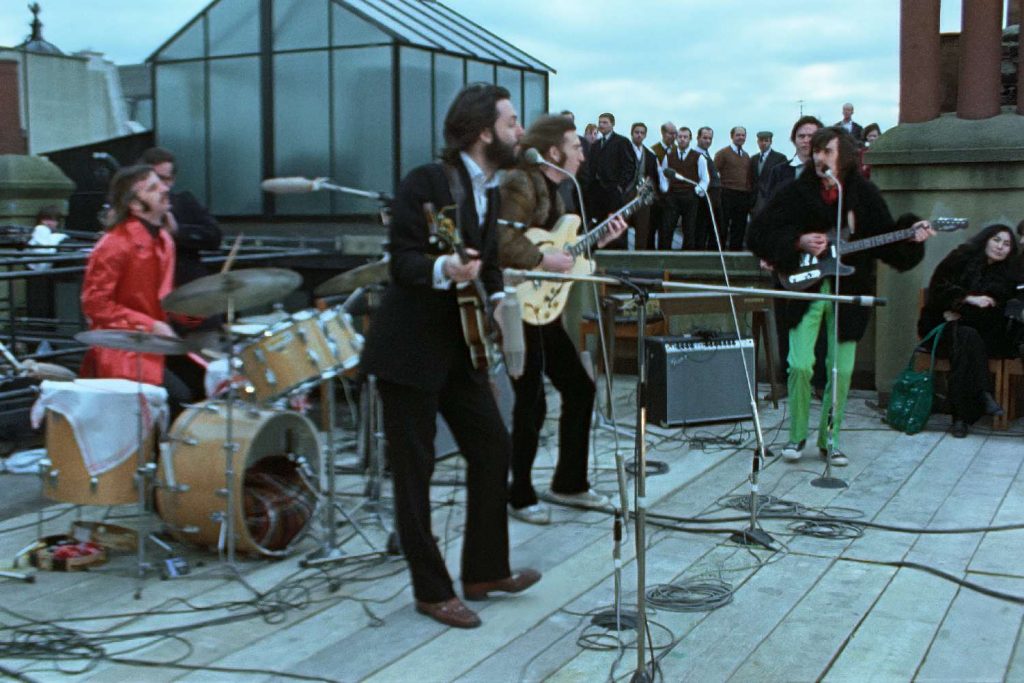The local shoegazers take us through the recording process of their latest LP.
Shoegaze is a bit of a bizarre entity at times. Being a genre largely built around Brits with copious amounts of guitar pedals and an overwhelming sense of social dread, it’s easy to overlook or understate the bands who exist outside of these peripherals, despite there being an abundance of incredibly good shoegazers sitting right on our doorstep down under.
A keynote example of Australia’s prospering shoegaze scene, Flyying Colours have been at the forefront of Melbourne’s local movement for a hot minute now. The band’s confident grasp of the genre’s aesthetics – think cavernous drums, gleaming synths, textured vocals and guitars in their droves – collides with their own psychedelic sensibilities to make for a sound that remains faithful to the sonics of their predecessors, yet offers up enough conviction to put them firmly in a field of their own.
Five years on from their debut effort Mindfullness, Flyying Colours have returned today with their sophomore effort Fantasy Country. Recorded in a myriad of locations around Melbourne, it’s an album that proves to be just as earnest as their first full-length, packing in nine tracks of woozy, lucid jams to lose yourself in.
It’s an album that sounds just as good seeping from a pair of headphones as it would blaring at full volume from the speakers of a heaving inner suburbs pub, with the four piece paying close attention to the sonics of the record to offer up their most concise release yet.
To find out more about Fantasy Country, we sat down for a chat with each member of Flyying Colours to discover how the record came together in various destinations around Melbourne, catching a glimpse at the hordes of gear used on the album along the way.
Pre-Production (Brodie J Brümmer)
In 2017 I began sending demos for this album to the band. Drunk on having just finished touring our first album we wanted to get something in the works straight away and start recording again. We had jammed a few of the ideas at sound checks but that was about it, and despite this un-preparedness we thought we would jump straight into recording the drum tracks and would work it all out from there…
Drums (Andy Lloyd Russell)
I was really into the demos Brodie had sent me about a month prior to the time we were hoping to record and had been piecing together drum parts loosely based around the drum rhythms in the demos.
At the time good mate and engineer Dan Frizza was freelancing out of the amazing Free Energy Device Studios owned and operated by Richie Belkner. Everything timed out well so we booked a couple of days and Brodie flew up to join me on the session. As these songs were so fresh we often found ourselves having to imagine guitar, bass and synth parts in our heads to get through certain takes, with Brodie sometimes calling out certain kick and/or snare rhythms so they would work with a certain part that was to come later.
We hired a beautiful ’60s Gretsch 24”/14” kick drum as we wanted a nice big bottom end. We also hired a 1970’s 14”/6.5” Ludwig Superphonic again, for its depth and lower tuning range. This was paired with my Pearl Masters toms and array or Zildjian and Sabian cymbals.
As for studio gear, if I remember correctly we had a Neumann 47 FET on the outside of the kick drum, a pair of AKG C12A’s for overheads, Shure SM7B’s on the toms, as well as other classic studio mics dotted around the place. I also recall Frizz running an Aux send to a Roland 201 Space Echo and Echoplex for printing some trippy echoes, as well as a Sansamp Tech 21 for some lo-fi crunch, which was also printed separately.
Guitar (Brodie J Brümmer)
I began tracking the guitar parts at a home studio in Brunswick. The setup wasn’t glamorous, but I had cool stuff. I use two Fender Jags – an early 2000s AVRI and 90’s Japanese model, a ’65 Baldwin Baby Bison, an early 2000s 70s reissue American Strat and even a 90s American Standard Tele in parts. The guitars were running into a 1976 blackface ’65 Re-issue Fender Twin Reverb and a 2005 Vox AC30.
I used Neve BA283 preamps cloned by our good friend and engineer Stive Collin’s Dad (see JC Audio) which have been the hero on most things I have ever recorded at home. The mics used were a 57 and RE20, the same guitar mic combo on our first album.
While all the gear was there, I have found that working from home can be perilous. I think my guitar playing in all these first recordings lacked the focus and attention that comes from working in a studio. I hadn’t considered tones/parts/notes as carefully as I could have, and I found the deeper I got into the track list the more confused I was becoming with it all. I was lacking direction and the picture of the final product I had in my mind had faded. So I deleted all the guitars and started again.
I was working at a famous Brunswick pub before it flooded in 2018, which post being shut down rented a short-term shop front at on Sydney Road. Over two weeks I began re-recording the tracks in the upstairs at night while the place was empty. I setup a sort of control room at the front, and the guitar amplifiers in the other two rooms at the back.
I tracked strictly one song per night, setting rules around how many parts I could play, how many takes of each part I could record and so on with no do-overs, I was forced to really plan out my tones, my parts and my playing. Working to a deadline meant I worked non-stop throughout the night pushing myself further into the songs. In the beginning I noted some tones I liked, some guitar/pedal/amp combos that worked and that I returned to throughout.
Most of all, for the first time in my life I constantly reminded myself to TRY to leave some space – if only a little. I think that shaped a lot if how it all turned out in the end.
Feedback (Gemma O’Connor)
We recorded all of my feedback guitars at home one night late 2018. Set up in the living room between the Fender and Vox I ripped single takes for both ‘White Knuckles’ and ‘Boarding Pass’. The band had given me a Blackout Effectors Musket Fuzz for my birthday on tour and this was really the first time I got to get loose with it and really experiment. It was incredibly satisfying finding the sounds to fill the gaps and complement the songs.
Bass (Melanie Barbaro)
The bass parts were tracked in the spooky Sydney Road shopfront on Halloween night. The bass cab (an Ashdown 2×12, missing a speaker) was set up in a big fireplace facing the wall and I was sitting on some kind of office chair drinking JD and coke. We used a DI, d112 and 57 through the Neve preamps.
I’m not sure if we spoke about the Beatles thing of tracking bass last or not, but I believe I was playing the Hofner which is a replica of Paul McCartney’s model. It probably took about three hours to record everything. I had been practising for a couple of weeks so that I could play everything through in one take.
‘This One’ involved a bit of improvisation and I had a lot of fun playing something different on a few takes and never really remembering exactly what I did until I heard it back.
Vocals (Brodie J Brümmer)
We tracked vocals with long time collaborator and friend Marty Brown at Standalone Studios. We had tracked everything from our first album with Marty and we always intended on working with him again for vocals.
Production-wise he gets the best out of us, allowing us to experiment with harmonies etc and we feel very comfortable yet focussed in his space. He used a Garfell MT71 condenser through a UA 6176 and it sounded like a record from the beginning.
Synths (Brodie J Brümmer)
Post our vocal session I began mixing parts of the album, putting things in more of a place and generally sussing out where everything was. I had been listening to a lot of ambient Eno stuff and began hearing and adding synth lines in the space I had left with the guitars.
Most of the synth was tracked in my bedroom DI, and it was all done on a MicroKorg. I loaded it up with an ’80s patch set and loved every second of it. This process was the most organic part of the album for me as I kind of embraced the tiresome search for the sounds in my head.
Mixing (Brodie J Brümmer)
Mid 2019 I realised if this record was ever going to be finished, it was time to say goodbye, and I passed the tracks on to Woody Annison to be mixed. We will always work with Woody as he more than anyone gets our vibe and honestly is just a fucking great mixer.
He pulled these tracks together in a way that I am very grateful for. We worked very closely together and the mixing process was a fantastic ending to an interesting journey.
Fantasy Country, the new album from Flyying Colours, is out now via Poison City Records / Club AC30. Grab tickets to their upcoming Australian tour here.
